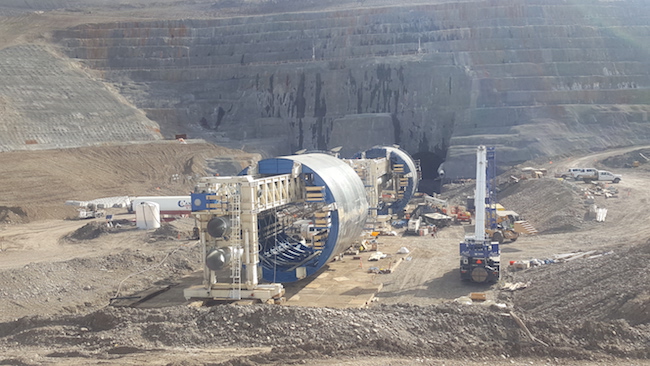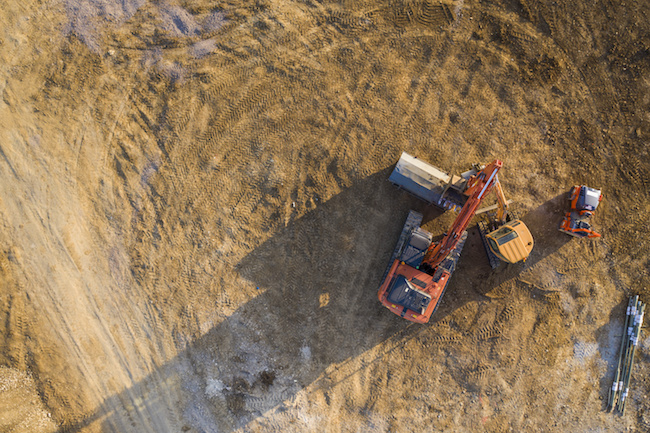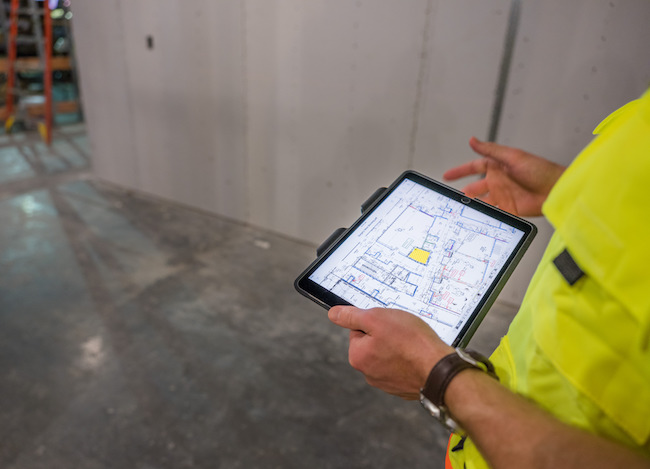
Holding their own: Coming off strong 2019, contractors dig in and innovate through uncertain times
By David Kennedy
Construction
Contractors used custom-built slipforms to line the diversion tunnels for the new Site C dam. PHOTO: Peace River Hydro Partners
From the first of the big iron arriving at the site of a new hospital in Corner Brook, N.L., to continued progress on the elaborate series of earthworks and diversion tunnels at the Site C dam outside Fort St. John, B.C., 2019 was a busy year for Canadian contractors. To complement the coast to coast infrastructure work, the strong economy kept demand up in both the residential and ICI (industrial, commercial and institutional) sectors across much of the country. In December, with cities continuing to quickly expand upward and a number of long-delayed resource projects moving ahead, nearly all signs pointed to 2020 as being another year of healthy growth in construction.
Six months later, it goes almost without saying that COVID-19 has turned all previous forecasts obsolete.
None of Canada’s contractors could have predicted the pandemic that has set the global economy adrift, but in spite of the daunting headwinds, a strong majority of builders are confident they’re well positioned to weather the crisis. Of the more than 100 contractors polled by On-Site — a figure that includes the largest builders in the country — approximately two-thirds say they are adequately prepared to deal with the fallout from the pandemic. Another 15 per cent go a step further, saying they are well prepared. A minority of contractors are less confident, with about 17 per cent of firms feeling they’re on shaky ground as the shockwave from the virus permeates the Canadian economy.
There’s reason for the overarching optimism. The construction industry entered the pandemic in a strong position. A decade of economic growth has kept backlogs at high or even record levels for many of the top firms, and early signs of infrastructure stimulus from provincial governments have helped bolster long-term confidence. With significant uncertainty still lurking ahead, contractors have tempered their expectations for 2020, but most anticipate working through the crisis and many still anticipate growing their business in the coming months.
TOO EARLY TO TELL
At this stage, the fallout from the pandemic remains difficult to predict. Like other industries, construction will come under pressure, but the impact depends on a long list of factors.
“This is not a recession that was brought on by market conditions, this was a recession brought on by a public health crisis,” says Bill Ferreira, executive director of research organization BuildForce. “There’s a lot of speculation about how quickly we might see a bounce back… but I don’t think anyone has any sort of definitive answers.”
Ferreira anticipates fresh market data will give BuildForce and other forecasters a clearer picture of how the construction industry and wider economy is handling the challenges in the months ahead. The extent of the damage to the wider economy, the effect of physical distancing rules on job site productivity and the scope of possible government stimulus are a few of the key areas to watch.
For now, worker safety remains the top priority for most contractors. The overwhelming majority of firms have enacted physical distancing rules, briefed staff on prevention and implemented enhanced cleaning schedules, according to On-Site polling. More than two-thirds have asked non-essential workers to work from home to limit the number of staff on-site and 58 per cent have staggered work shifts.
Temporary job site closures, both voluntary and mandatory, have been less prevalent, but have proven to be a significant part of response plans. Approximately 55 per cent of the contractors polled say they have temporarily shut at least one job site as a result of the pandemic.

Construction paused on many sites in Ontario and Quebec during the pandemic. PHOTO: Adobe Stock/Ink drop
As of May 19, however, when Ontario allowed the remaining segments of its construction industry to reopen, all government-mandated job site closures have been lifted across the country. Work in Ontario remained partially open throughout the crisis, while Quebec forced contractors to halt most construction from April 24 to May 11. All other provinces and territories exempted construction from such blanket restrictions, though most ordered contractors to enact a range of health measures.
With the pandemic entering its third month, these preventive steps have become standard operating procedure on job sites and contractors are turning their focus from response to recovery.
A FRESH START
For construction, the pandemic has been a shock to the system. But some of the forced changes are certain to prove beneficial over the long term. In many cases, the crisis has given contractors a reason to look at adopting new technology, or speed up a migration to a new piece of software that was already underway.
Cloud-based systems are just one example.
There has been a growing trend toward connected devices and shared information ever since tablets first arrived on job sites, but overnight, COVID-19 has made paper-based systems obsolete. The cloud — be it a wide-reaching construction management software, or specialized app for a certain segment of the job — has allowed teams to go virtual with some job site staples, such as a morning safety meeting or the white board in the project trailer.
At the same time the real-time aspect of cloud software lets non-essential staff that have been temporarily moved off-site stay up to date and remain productive at home. Long term, contractors may be able to slim down their on-site workforces in favour of a larger roster of remote staff.
Brad Barth, chief product officer at InEight Inc., expects there’s no going back.
“Even though that this pandemic has maybe forced peoples’ hand to move to a cloud solution, I think the benefits for which is was originally designed — that ease of collaboration, the central repository of the data that everybody can look at, the real-time access to the information — those are the things that will keep people using it even when things lighten up from a quarantine perspective,” he says.
Barth anticipates the construction industry’s abrupt technology adjustment will also help builders chip away at the industry’s well-known productivity deficit when compared to other industries.
At Quebec-based Canam Group, Elio Perrazzino, the project management manager for Eastern Canada for the company’s buildings division, said collaboration over the cloud has become essential through the pandemic.
Canam is currently building and installing the structural steel shell for a number of new, e-commerce-focused warehouses for Canada’s big grocery chains. In response to blistering demand for online orders, timelines are being accelerated where possible, and Canam is working to keep up. Perrazzino’s team uses several components of Autodesk Construction Cloud, including PlanGrid and BIM 360, as well as Revit — a building information modeling tool — and has found it’s actually been able to turn work around more quickly in the cloud.

A worker running PlanGrid. Technology is playing an ever-increasingly role on job sites as companies adjust to new pandemic protocols. PHOTO: Autodesk
“Just this week, I’ve had three clash detection meetings and usually they would last the whole day,” Perrazzino says. “You would get together around a big table… and now it’s done online and it’s done in half an hour.”
The potential efficiencies uncovered by the sudden shift are certain to find their way into the company’s post-pandemic operations.
“Putting things in perspective, it’s going to change a lot of things,” Perrazzino says, noting that he and his team have conventionally spent a lot of time on-site. Going forward, he anticipates his daily drive to the job site becoming something he only needs to do once a week, or once every two weeks.
KICK-STARTING THE ECONOMY
The virus has caused profound disruption throughout construction, but new opportunities will inevitably take root.
Infrastructure is one area already showing promise. Governments in Alberta, Saskatchewan, Manitoba, Quebec and Nova Scotia have topped up existing spending plans and stimulus from other provinces seems likely to follow as virus restrictions loosen up coast to coast.
At the federal level, Ottawa has opened up a COVID-19 stream for its 12-year Investing in Canada plan. The move could see up to $3.3 billion spent on infrastructure work tied to the pandemic response, such as health care retrofits or projects like bike paths that promote social distancing. While the several billion in funding was already on federal books, the initiative will let provinces or territories cost-share a wider range of projects with the feds.
This article originally appeared in the June 2020 issue of On-Site. To read through the full issue, click here.




